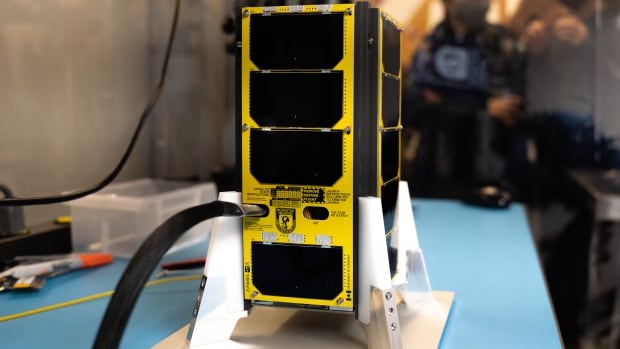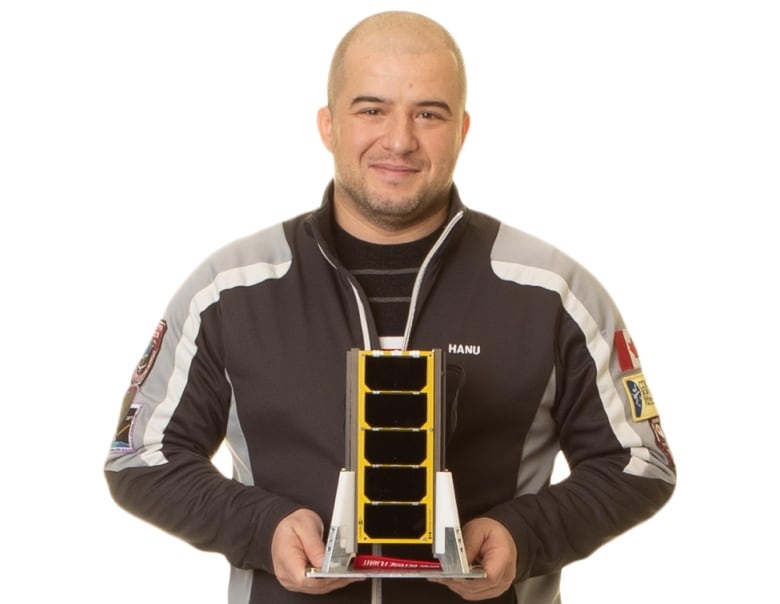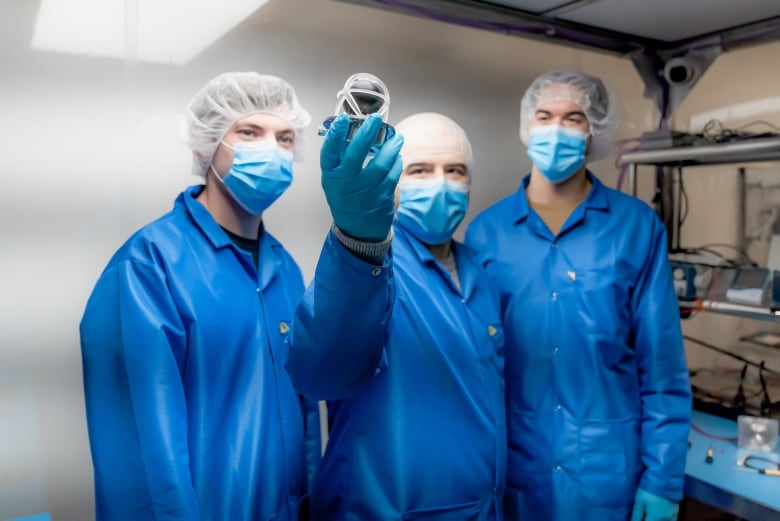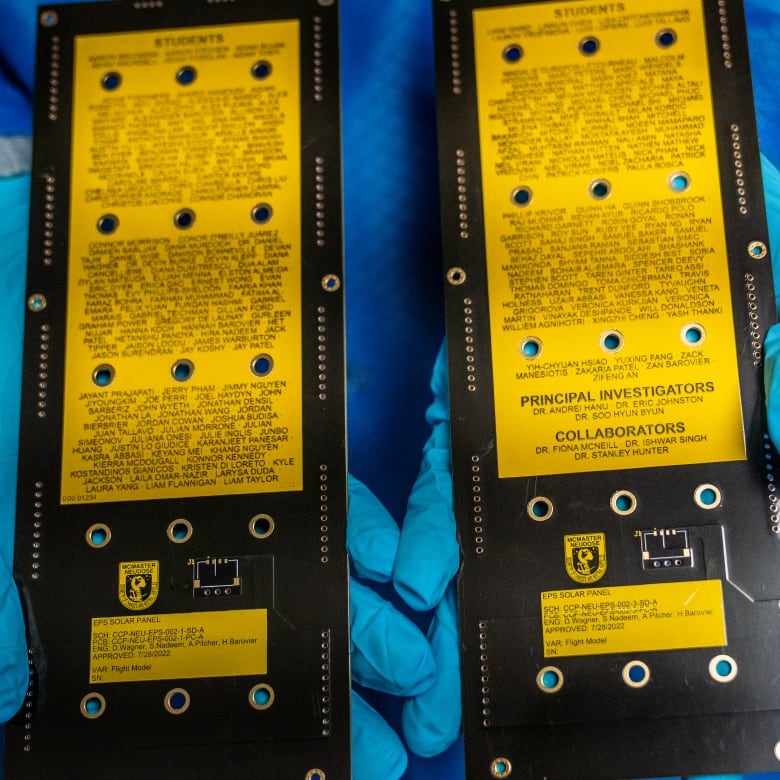
McMaster University’s first space-bound satellite is scheduled to join a SpaceX shuttle launch in Florida next week.
The NEUDOSE project was developed over eight years, involving more than 150 students, staff and alumni at the Hamilton university. The satellite is scheduled to be launched into Earth’s lower orbit on Tuesday at 8:30 p.m. ET.
The goal is to gather information on space radiation, to study its effects on the human body.
“I think everyone’s got butterflies and are super excited after all this time,” said Andrei Hanu, a professor of physics and astronomy and co-principal investigator of the project.
“It was crunch time for us the last couple of months, but now everyone is excited to take all of this in.”
NEUDOSE — short for Neutron Dosimetry and Exploration — is a mini-satellite that’s only 20 centimetres high. It’s designed to collect data outside the Earth’s atmosphere that will detect and measure the amount of space radiation.
Scientists hope to understand the risks astronauts face with prolonged exposure in space.

The satellite is currently at the Kennedy Space Center in Cape Canaveral, waiting to be loaded onto the SpaceX shuttle. A command centre has been set up on the McMaster campus, in the Information Technology Building, to receive data from NEUDOSE.
Hanu told CBC Hamilton he hoped to join more than 20 members of the project for the launch in Florida on Tuesday.
“I hope not to cry too much,” Hanu said in a news release.
From concept to space
Hanu said the inspiration for such an ambitious project came from his experiences at the NASA Goddard Space Flight Center in 2014. He was working as a research scientist and attended a conference on NASA’s new Space Launch System — which will be its most powerful rocket to be built, according to the agency.
“I was blown away. I couldn’t believe that American students and researchers had these opportunities that we didn’t have in Canada,” he said. “I said, ‘I want to do this with a university in Canada.'”

Hanu said that when he returned to McMaster, he spent a month designing a rough concept and brought forward the proposal — labelled “Do you want to build a satellite?” — on Jan. 31, 2015.
It’s one of 15 projects chosen to be funded through the Canadian CubeSat Project in 2017, where they began to receive financial support from the Canadian Space Agency and Ontario power provider Bruce Power.
‘Written on the backs of napkins’
Daniel Tajik has a doctorate in electromagnetics and radio-frequency engineering from McMaster and worked primarily on the ground station system housed on campus.
He said in an interview that he was proud how an extracurricular project “written on the backs of napkins” was now going into space.
“It started off as a PhD project and this sort of dream to build something really big,” he said.
He said many students who worked on the project went to pursue careers at different space companies and he’s happy he was part of an important project.
“We all had our little parts to play in putting it together, but I’m happy that something I helped work on and held in my hands is going to float in space, even if it’s only gonna float there for maybe a year.”
Everyone who took part in the project had their names laser-etched onto the plates of the satellite.

Aaron Pitcher, a fourth-year McMaster PhD student in electrical and computer engineering, joined the project in 2016. He is now the senior systems lead.
He called it a valuable experience, and hopes more students will come through the program and become part of future projects.
“It’s been an absolutely outstanding project to be a part of. I honestly become speechless when I talk about putting something in space at this point in my career.”